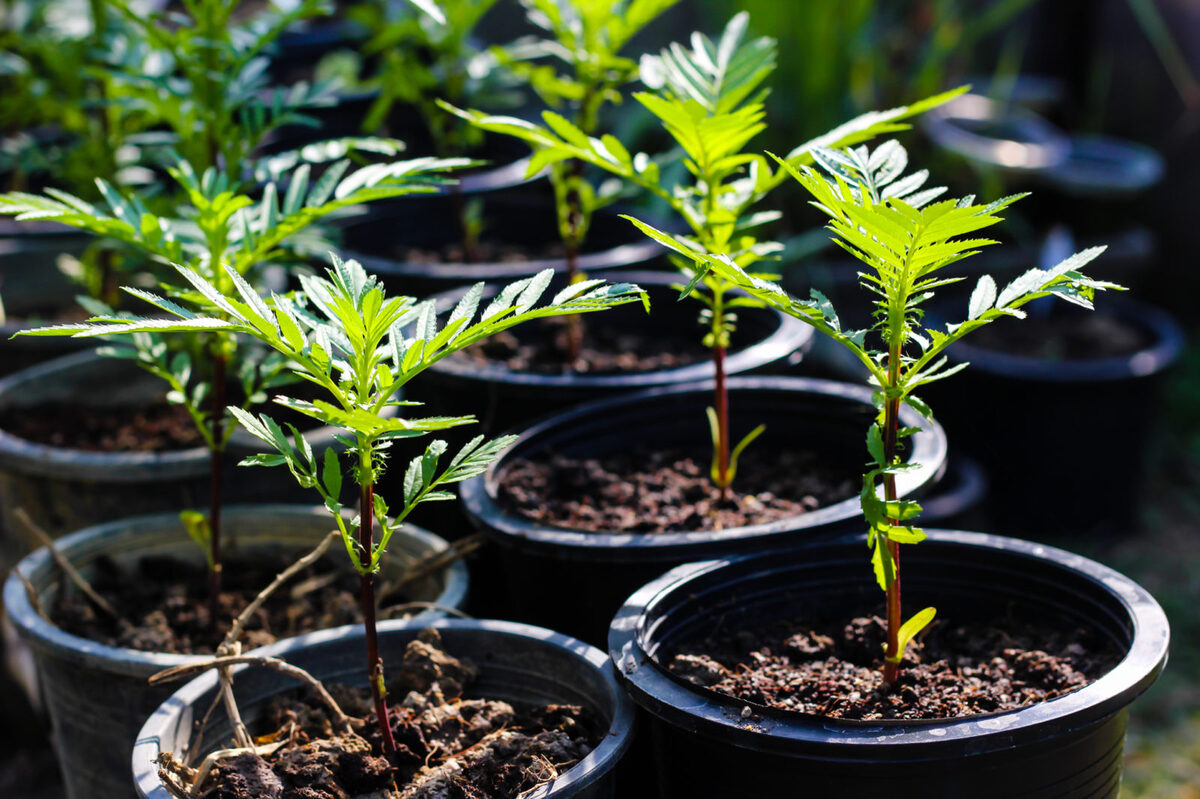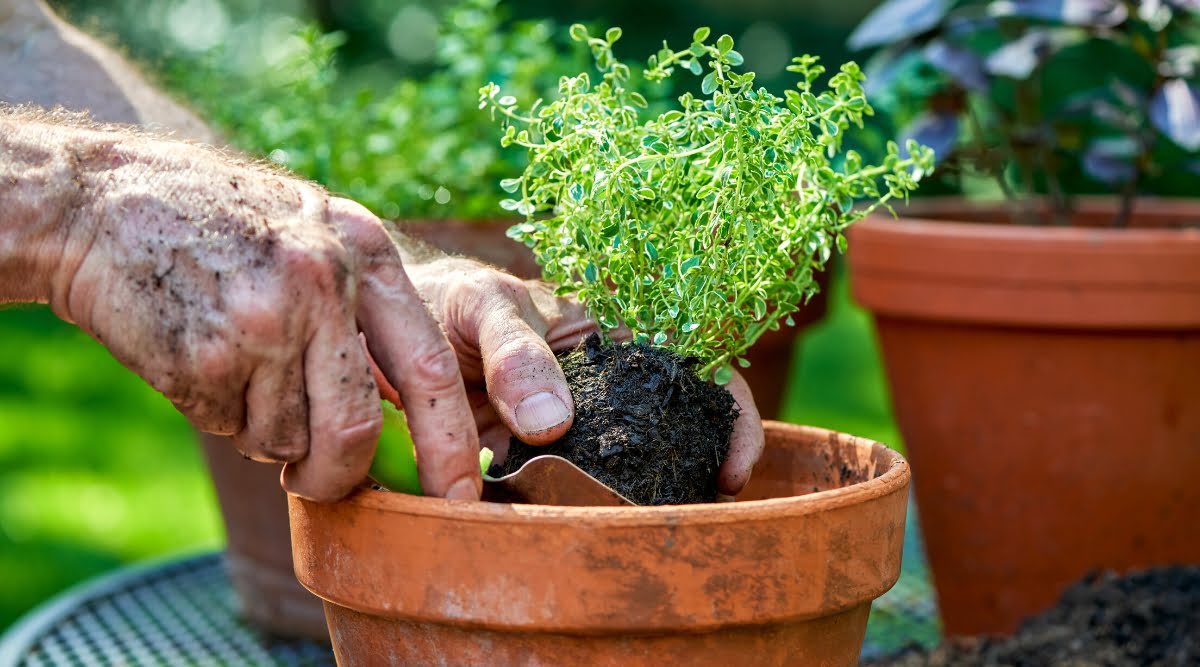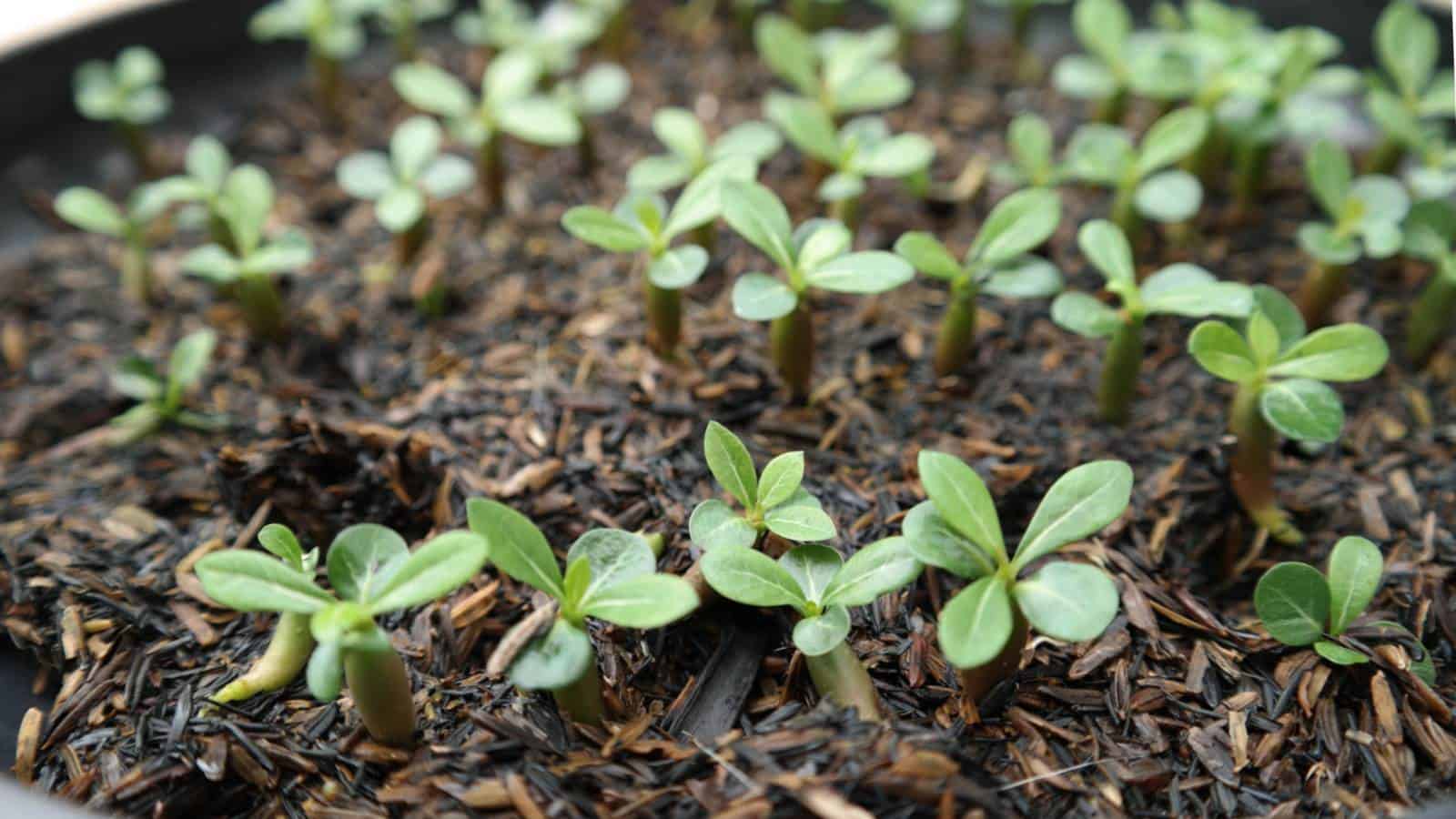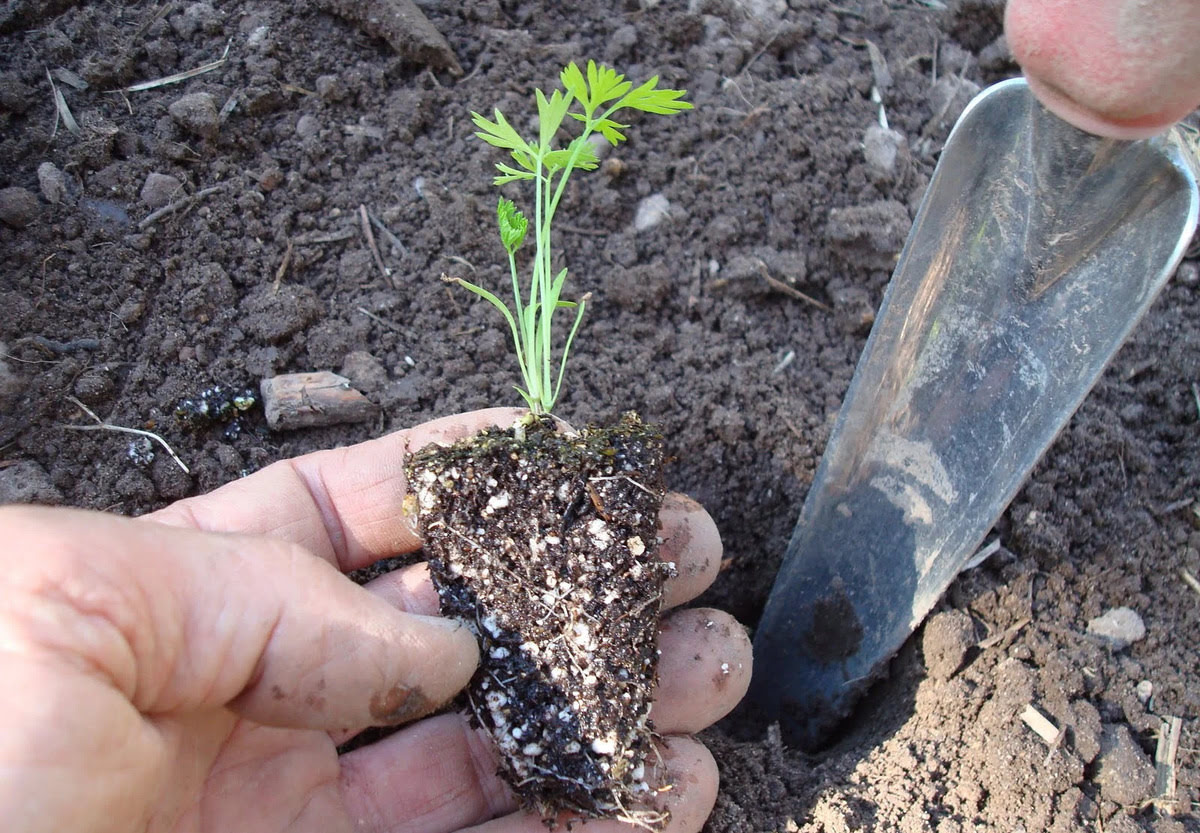Home>Types of Gardening>Edible Gardening>When To Transplant Tomatillo Seedlings


Edible Gardening
When To Transplant Tomatillo Seedlings
Published: January 3, 2024
Learn when to transplant tomatillo seedlings for successful edible gardening. Follow these tips for a healthy and bountiful harvest.
(Many of the links in this article redirect to a specific reviewed product. Your purchase of these products through affiliate links helps to generate commission for Chicagolandgardening.com, at no extra cost. Learn more)
Table of Contents
Introduction
So, you've decided to grow tomatillos in your garden. Congratulations! Tomatillos are versatile and flavorful additions to any garden, and they can be used in a variety of culinary dishes, from salsas to sauces. However, to ensure a successful harvest, it's crucial to understand the best practices for transplanting tomatillo seedlings. In this guide, we will delve into the world of tomatillo seedlings, exploring when and how to transplant them for optimal growth and yield.
Transplanting tomatillo seedlings is a pivotal stage in their development, as it marks the transition from the controlled environment of seed trays to the open space of the garden. By carefully timing this process and providing the right conditions, you can set the stage for robust, productive tomatillo plants. Throughout this article, we will discuss the ideal timing for transplanting tomatillo seedlings, the process of transplanting them, and the essential care they require post-transplant. Whether you are a seasoned gardener or a beginner with a green thumb, this guide will equip you with the knowledge and confidence to nurture thriving tomatillo plants in your garden.
Understanding Tomatillo Seedlings
Before delving into the specifics of transplanting tomatillo seedlings, it’s essential to grasp the characteristics and needs of these young plants. Tomatillo seedlings, like their tomato cousins, belong to the nightshade family and exhibit similar growth patterns. When grown from seeds, tomatillo seedlings typically emerge within 7 to 14 days under optimal conditions. These seedlings are initially delicate, with tender stems and developing root systems that require careful attention.
As tomatillo seedlings mature, they develop their characteristic serrated leaves and sturdy stems. During this stage, it’s crucial to provide them with adequate sunlight, typically 14-16 hours per day, to promote healthy growth. Additionally, maintaining a consistent watering schedule is essential, ensuring that the soil remains evenly moist but not waterlogged.
Understanding the growth trajectory of tomatillo seedlings is vital for determining the optimal timing for transplanting. Typically, tomatillo seedlings are ready for transplantation when they have developed their first set of true leaves, which are the second set of leaves to appear after the initial seed leaves. At this stage, the seedlings are robust enough to withstand the transition to an outdoor environment, provided that the outdoor conditions are favorable.
By comprehending the developmental milestones and requirements of tomatillo seedlings, you can make informed decisions regarding their care and transplanting timeline. In the following sections, we will explore the ideal window for transplanting tomatillo seedlings and the step-by-step process to ensure a successful transition to the garden.
When to Transplant Tomatillo Seedlings
Transplanting tomatillo seedlings at the right time is pivotal to their successful establishment in the garden. As a general guideline, tomatillo seedlings are typically ready for transplanting when they have reached a height of 3-4 inches and have developed their first set of true leaves. At this stage, usually 4-6 weeks after germination, the seedlings are sturdy enough to endure the transplantation process and adapt to the outdoor environment.
It’s important to consider the local climate and weather conditions when determining the ideal timing for transplanting tomatillo seedlings. If you are experiencing unpredictable weather patterns or late frosts in your area, it’s advisable to wait until the risk of frost has passed before transplanting the seedlings. Tomatillos are sensitive to frost, and exposure to freezing temperatures can impede their growth or even cause irreparable damage.
Furthermore, transplanting tomatillo seedlings during a period of mild, overcast weather can help minimize transplant shock and facilitate the seedlings’ acclimatization to their new surroundings. By choosing a time when the weather is relatively temperate, you can optimize the chances of a smooth transition for the seedlings, allowing them to establish strong root systems and continue their growth without undue stress.
Considering these factors, the ideal window for transplanting tomatillo seedlings typically aligns with the onset of consistently warm weather and the passing of the last frost date in your region. By carefully observing the growth and environmental conditions, you can pinpoint the opportune moment to transplant your tomatillo seedlings, setting the stage for robust, productive plants in the seasons to come.
Transplanting Process
Transplanting tomatillo seedlings from their indoor containers to the outdoor garden requires a methodical approach to minimize stress and ensure their successful establishment. Before initiating the transplanting process, it’s essential to prepare the garden bed or containers where the seedlings will be relocated. Select a well-draining location that receives ample sunlight, as tomatillos thrive in full sun and require at least 6-8 hours of direct sunlight per day.
When the weather and soil conditions are favorable, typically after the last frost date, it’s time to begin the transplanting process. Start by thoroughly watering the seedlings in their original containers to facilitate the removal of the root ball without causing undue disturbance to the plants. Gently loosen the soil around the base of each seedling, taking care to preserve the delicate roots as much as possible.
Next, dig planting holes in the prepared garden bed or containers, ensuring that the holes are spaced approximately 2-3 feet apart to accommodate the mature size of tomatillo plants. The planting holes should be deep enough to accommodate the root balls of the seedlings, and any lower leaves on the seedlings should be removed to promote robust growth.
Carefully lift each tomatillo seedling from its container, taking care to support the root ball and minimize root disturbance. Place the seedlings in the prepared planting holes, ensuring that they are positioned at the same depth as they were in their original containers. Backfill the holes with soil, gently firming the soil around the base of each seedling to provide stability.
After transplanting the seedlings, water them thoroughly to help settle the soil around the roots and alleviate any transplant shock. Applying a layer of organic mulch around the base of each seedling can help retain soil moisture and suppress weed growth, fostering an optimal environment for the newly transplanted tomatillos.
Throughout the initial days following transplanting, monitor the seedlings closely, ensuring that the soil remains consistently moist but not waterlogged. With proper care and favorable growing conditions, the transplanted tomatillo seedlings will gradually acclimate to their new environment, developing strong root systems and embarking on a journey toward bountiful harvests.
Caring for Transplanted Tomatillo Seedlings
After transplanting tomatillo seedlings, providing attentive care is crucial to support their growth and ensure their adaptation to the outdoor environment. Consistent watering is essential during the initial phase following transplanting, as the seedlings require adequate moisture to establish their root systems in the new location. However, it’s important to strike a balance, avoiding overwatering that can lead to waterlogged soil and potential root rot.
Regularly monitoring the moisture level of the soil and adjusting the watering frequency based on the prevailing weather conditions is key to promoting the health and vigor of transplanted tomatillo seedlings. Mulching around the base of the seedlings can help retain soil moisture, regulate soil temperature, and deter weed growth, contributing to an optimal growing environment for the tomatillos.
As the transplanted tomatillo seedlings continue to grow, providing support in the form of stakes or cages can prevent the plants from sprawling on the ground and protect the developing fruits from contacting the soil. Tomatillos have a tendency to sprawl as they mature, and providing early support can help maintain an organized and accessible garden space while safeguarding the developing harvest.
Furthermore, incorporating a balanced fertilizer into the care regimen can bolster the growth and productivity of transplanted tomatillo seedlings. Selecting a fertilizer with a higher phosphorus content can promote robust flowering and fruit development, contributing to a plentiful yield of tomatillos as the plants mature.
Throughout the growing season, vigilance against common pests and diseases that may affect tomatillos is paramount. Regularly inspecting the plants for signs of pest infestation or disease, such as aphids or early blight, enables early intervention and effective management, safeguarding the health and vitality of the tomatillo plants.
By providing attentive care, including appropriate watering, structural support, balanced fertilization, and proactive pest and disease management, you can nurture transplanted tomatillo seedlings into thriving, productive plants that yield an abundant harvest of flavorful fruits. With each passing day, the seedlings will grow into robust plants, laden with lantern-like husks concealing the delectable tomatillos within, ready to elevate your culinary creations with their vibrant flavor and versatility.
Conclusion
Embarking on the journey of growing tomatillos from seedlings is a rewarding endeavor that offers a wealth of culinary possibilities and the satisfaction of nurturing vibrant, productive plants. By understanding the unique characteristics and requirements of tomatillo seedlings, you can navigate the process of transplanting them with confidence and precision, setting the stage for a flourishing harvest.
From the initial stages of seed germination to the careful nurturing of young seedlings, each phase of the tomatillo’s growth presents an opportunity to connect with the natural world and witness the marvel of plant development. When the time is right and the conditions are favorable, transplanting tomatillo seedlings into the garden marks a pivotal moment in their journey, signaling the transition from tender seedlings to robust, fruit-bearing plants.
Throughout this guide, we have explored the critical considerations for determining the optimal timing of tomatillo seedling transplantation, the meticulous process of transplanting them, and the essential care they require post-transplant. By adhering to these best practices and infusing your care with attentiveness and dedication, you can foster the growth of transplanted tomatillo seedlings into thriving plants that enrich your garden and culinary endeavors.
As the tomatillo plants mature, adorned with delicate, lantern-like husks that shelter the jewel-like fruits within, you will witness the culmination of your efforts and patience. The harvest of tomatillos, with their tangy, citrusy flavor and culinary versatility, will serve as a testament to the rewards of conscientious cultivation and the vibrant abundance of nature’s bounty.
In nurturing tomatillo seedlings from transplant to harvest, you are not merely cultivating plants; you are sowing a connection to the earth, embracing the rhythms of growth and the artistry of tending to living organisms. As the tomatillos thrive under your care, they will infuse your culinary creations with their distinctive essence, inviting you to savor the fruits of your labor and celebrate the vibrant tapestry of flavors that the natural world offers.
May the journey of transplanting tomatillo seedlings and tending to their flourishing growth inspire a deeper appreciation for the interconnectedness of life and the abundance that springs from nurturing the earth’s gifts. With each tomatillo harvested, may you find joy in the union of cultivation and culinary artistry, savoring the fruits of your labor and the boundless flavors that grace your table.










